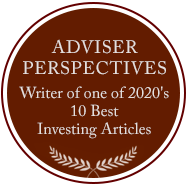
Categories
Resource Links
 GIR's Investing in the New Europe
GIR's Investing in the New EuropeBloomberg Press, 2001, "Sound, practical advice."
Wall Street Journal Europe
On Hedge Fund Risk Management
26 August 2009, Absolute Return
The gravest problem confronting the hedge fund industry today is the general perception, right or wrong, that managers do not have a particular good handle on managing risk.Many investors are now thinking that much of the industry’s past successes were driven more by taking on increasingly greater and greater risk without understanding the possible consequences until it all came crashing down in a perfect storm that hit over the past year. All of this is suddenly suggesting serious management deficiencies.
The clearest manifestation of this challenge–and the trouble the industry is in–is the precipitous decline in hedge fund assets. After peaking at the end of 2007 at $2.14 trillion, according to the hedge fund tracking firm BarclayHedge, assets then fell by more than 40 percent in the following year, ending 2008 at $1.23 trillion. And through the first half of 2009, they lost another 20 percent, with assets having fallen below $980 billion.
Ron Papenek, head of business strategy at RiskMetrics Group, an independent financial risk consultant, explains the root of the problem being when the drive for short-term profitability ended up trumping longer-term concerns. “Intensive competitiveness among hedge fund managers to attract investor capital,” saya Papenek, “drove many to imprudently shift their focus away from risk.” As a result, the industry rewarded managers who took on excessive leverage and exposure to riskier assets over those who were demonstrating greater discretion.”
This propelled a vicious cycle, triggered by the failure and near-failure of key financial players that led to the freezing up of credit. Save for short-bias and global macro strategies, this hit most hedge funds very hard, which sent many investors fleeing. To meet redemptions, multi-strategy funds were forced to sell their most liquid assets at particularly inopportune times, such as those in long-short equity, locking in losses. But it also forced them to subsequently pull out assets from less liquid, longer-term strategies, such as distressed credit and event driven–accelerating their own decline–to redistribute risk.
“Falling values then led to more redemptions, expanding the need for further asset disposal,” explains Christopher Ito, head of portfolio risk management at Union Bancaire Privée [UBP], whose assets declined by approximately 40 percent over the past 20 months through July 2009.1 Virtually overnight, Ito observes, ostensibly uncorrelated strategies and asset classes began tracking similar performance, amplifying losses, abruptly leading to the collapse of portfolio diversification and the sense that risk was being managed.
Then there were a series of scandals, topped by Bernie Madoff’s $50 billion ponzi scam, that made investors wonder how much due diligence hedge funds were really practicing, and how much of their 2/20 fees were really being spent on protecting their assets.
All told, last year made investors doubt how well managers really understood risk. This then led to another risk, that until recently, investors considered rather limited: how locked up their investments can be.
In its March 2009 annual survey of Alternative Investments, Deutsche Bank found that “never before had we seen such a raft of managers invoking gates, suspending redemptions and increasing sidepockets along with numerous other means to dissuade and prevent investors from redeeming. Investors were forced to employ a number of these measures themselves as they too were impacted by sizeable redemptions from their underlying clients. The liquidity mismatch that had long been recognized in the industry as potentially damaging finally came to the fore as both managers and investors were caught out in a rapidly deteriorating AUM environment.”2
“Transparency, risk management, and liquidity are now top priorities for investors as they select their hedge fund managers,” said Jonathan Hitchon, Deutsche Bank’s Co-Head of Global Prime Finance, “and as a result, we have seen managers of various strategies adjust their structures accordingly.”3
Many hedge fund managers are responding. According to Tim Garry, Chief Risk Office at Passport Capital, “the current crisis has produced fundamental changes in the way we define and manage risk. Specifically, we now look at risk as a distinct asset class, aggregating it from each individual investment and sector into an entity that we measure as consistently as any individual exposure.”
Relative versus Absolute Performance
Despite the perception that most hedge funds are largely suppose to be absolute return vehicles, one could argue that in relative terms, hedge funds really didn’t do that badly. Last year, the industry as whole suffered less than 60 percent of the losses incurred by the broad market. Barclay Hedge Fund Index was off 21.63 percent4 while the S&P 500 declined by 37 percent. These numbers indicate the industry did in fact provide a hedge against a vicious bear market, especially if one thinks 2008 was an outlier year, equivalent to a 100-year flood, rather than a reflection of systemic industry failure.
But most institutional gatekeepers and a number of more successful managers, who were able to sidestep the turmoil, were far less forgiving.
James Melcher, founder of New York-based Balestra Capital Partners, thinks the current crisis was clearly in the making for years and so was the need for appropriate risk and investment adjustments. “With the problems in residential mortgages becoming obvious in 2006, the subsequent deterioration in real estate values across the board, growing unemployment, increasingly constrained consumption, and enormously expanded credit risk, there were plenty of signs that mandated a move away from the bull-market group-think and extreme risk-taking of the previous four years,” explains Melcher.
Balestra’s risk management is built into the way it makes and manages every individual investment—from idea generation, instrument selection, portfolio construction and monitoring, through realizing profits and losses. The fund utilizes the same risk-control procedures that most other hedge funds use. “But we also integrate analyses of market risk and systemic risk with common sense,” says Melcher.
Using active hedging and avoiding crowded trades help Balestra maintain a highly flexible portfolio that can shift positions quickly. The fund limits individual positions to no more than 2.5 percent of the portfolio. It can liquidate 90 percent of the portfolio within one hour. And Melcher’s team has no problem moving into large cash positions, which hit 80 percent in 2008.
Another key component of risk management is the fund’s asymmetrical investment exposure, which increases profit opportunities while limiting downside. For example, when investing in Credit Default Swaps, Balestra is only interested in buying protection. Therefore, it limits its risk to the premiums involved in buying such derivatives. “We would never sell a CDS and expose ourselves to potential losses equaling the size of the contract,” says Melcher.
His $1 billion flagship global macro Balestra Capital Partners fund was up nearly 46 percent in 2008, and added another 3.36 percent through the first seven months of 2009.
In questioning the industry’s risk management skills, Roy Niederhoffer, whose firm manages $900 million, thinks many hedge funds make money only when stocks are rising and economic conditions are tranquil. “They often fail to provide a hedge during bear markets and periods of illiquidity,” Niederhoffer explains, “when many managers do not deliver value beyond that of equities.”
As evidence, he points to the HFRI Fund Weighted Composite Index whose trailing three-year returns through July were on average 0.80 correlated to the S&P 500. In contrast, Niederhoffer’s Diversified Program was -0.55 correlated with the broad market over the same period.
Niederhoffer’s investment approach is based on very short-term trades [lasting on average between one to two days] configured around historical investor behavior, which together he believes inherently controls risk. No one particular trade will have a meaningful effect on total returns. He relies on generating small positive returns across many bets rather than hitting home runs.
He further controls risk by relying on diversified trading strategies that respond to a variety of different signals. Each strategy is scaled and designed to exit positions at different levels, each influenced differently by volatility. “We intentionally seek to have a large number of individual strategies that have extremely diverse return profiles,” adds Niederhoffer, “so that when a few strategies are down, we want others to be up.”
He also uses a proprietary risk measure to incorporate changing market correlations that advises each investment. When his particular version of value-at-risk gets too high, he reduces his positions proportionately. As a last backstop, the firm’s Risk Management Committee will occasionally use its discretion to reduce risk, especially before big market events—such as moments preceding the release of unemployment figures–or during periods of high volatility.
This approach, in concert with his investment selection process, helped Niederhoffer’s global macro Diversified Program soar more than 51 percent in 2008. This year through July, however, he is off 2.3 percent.
Specialized managers, such as Stillwater Capital Partners, which focuses on asset-based lending, also found its long-term approach to risk management responsive to the current crisis. According to Jonathan Kanterman, managing director of the firm’s billion-dollar portfolio, the key is in thoroughly understanding the various industries to which the funds lend. The firm relies on in-house and third-party experts to accurately value collateral that backs all loans. Having enforceable, unencumbered clean title to such collateral is also essential.
“We also make sure we understand our borrowers’ business plans,” explains Kanterman, “to ensure their loans are being used in ways that will likely result in repayment.” Further, about a third of the fund’s loans, or lines-of-credit, are made to repeat clients with proven track records, adding a further level of security. In the worst-case scenario, Stillwater knows how to renegotiate, repossess, or dispose of the underlying asset. Most important, “transparency of our operations is essential for both our managers and investors to discern the integrity and overall risk of our funds,” says Kanterman.
But to Kanterman, another key to risk management is avoidance of leverage. Any kind of financial crisis that would force the quick sale of assets to deleverage would put the interest of lending banks ahead of shareholders.
The results: Stillwater Asset Backed Fund LP was up 10 percent in 2008, but is off 3.3 percent through the first six months of 2009.
However, the crisis has restructured Stillwater’s loan book and strategies, splitting it into three distinct categories. The short-term lending operation [six months or less] has been a separately managed strategy for the past two years, generating annualized returns of 12 percent. It deals with only trade finance and energy remarketers–backed by the commodity and receivables. Kanterman thinks this will be the fastest growing segment of the firm’s entire operations because of expanding institutional and pension demand for shorter-term focused products that ostensibly carry less market risk with better liquidity.
Stillwater’s core operations deal with medium-term loans lasting between 12-24 months, made to contingency fee-based law, life insurance finance, and real estate firms. And the firm’s longer-term strategy has evolved from real estate loans that could not be repaid on time. The firm decided, where applicable, these assets would be more valuable if loan terms were restructured instead of assets being liquidated in a declining market. Maturities here go out from two to three years.
Laggards
Some of the industry’s much larger funds, however, were far less fortunate.
Passport’s Global Flagship fund lost 51 percent last year, in stark contrast to preceding years’ performance, which still left it’s 3-year annualized returns through 2008 above 21 percent.
The key problem, according to Tim Garry, the firm’s chief risk officer, was the complete drain in liquidity, especially in emerging markets that forced unprecedented liquidations, put pressure on prices, and exaggerated volatility. The fund’s large exposure to emerging markets was further hit by the sudden rally in the dollar.
“We previously didn’t focus on short-term volatility,” admits Garry, “and we didn’t rely on any specific downside constraints, such as stops that would kick in when market losses begin to mount, because we are long-duration investors who believe our long-short strategy is designed to outperform in the long run.”
Last year, clearly it didn’t.
In recent years, the fund’s long-term investment strategy is overweight long emerging markets complemented by short US financials and consumer discretionary and a touch of global macro. However, the speed in which foreign stock prices declined in the second half of 2008 made it very difficult for Passport to liquidate positions. The fund’s gains from short US stock exposure [hurt by the temporary ban on short selling financials] and its play on interest rate spreads between two- and ten-year Treasuries were not enough to compensate from the hit it took from last year’s drastic decline in emerging market values.
In response, the firm has been adopting a series of improvements to address its risk management shortcomings.
First, it has placed a new-found emphasis on liquidity. This is of extraordinarily importance says Garry, because the firm runs concentrated portfolios. Moreover, “We believe the return on illiquid securities is no longer enough to compensate for the risk,” says Garry. Accordingly, he is shifting his fund’s liquidity profile. Currently, he can liquidate more than half the fund’s assets within ten days. This is based on the fund being able to sell between 10 and 25 percent of a position’s average daily trading value. His goal is to push this figure to 75 percent by year’s end.
The fund’s reliance on Value-at-Risk, which Garry explains doesn’t control against tail-risk loss, is now being complemented with a more short-term focused metric called Conditional VaR. Incorporating a Monte Carlo simulation of 5000 possible market scenarios over the past day, the model aims at managing short-term volatility, especially when there is a breakdown in uncorrelated asset class performance. Fifty percent of the model’s weighting is focused on the past 10 days; the other half, on the prior 70 days.
“This helps provide us with an early warning sign when substantial value can be lost,” says Garry. He believes, with 95 percent certainty, that this may limit daily tail-risk loss to no more than 2-4 percent. And even if the market was to slide continuously as it did earlier this year, Garry believes management has better tools to independently move to reduce risk.
But he admits that there are limitations to all VaR calculations because of human input that informs their mathematical underpinning. “One always must be mindful that VaR, and any version thereof, is helpful to show potential trouble,” says Garry, “but discretionary interpretation is always necessary to fully respond to risk.”
The firm is also taking the unusual step of running live Quant models that simulates programs, based on factors such as earnings estimate revisions and price momentum, that Garry believes drives about one-third of all US equity trades. “This is helpful in understanding a key market force,” he says, “and how it may impact Passport’s portfolios.”
In September, the firm installed Sunguard’s Front Arena software, which provides live risk calculations for potential profit and losses involving existing and potential position. This differs from other risk management solutions that provide such information only after the last trading day.
These improvements, says Garry, along with existing risk controls that limits positions to no more than 10 percent of the portfolio and with one-fifth of the portfolio invested in global macro trades [where losses are strictly limited], should help further reduce the blind spots inherent in risk management calculations.
Passport declined to discuss performance, but according to investor communications, the fund is up 23 percent this year through July.
But there is one specific risk factor that Garry admits will remain difficult to anticipate and to which to respond. He explains that government intervention, so far in the form of massive bailouts, forced corporate mergers, partial nationalization, and restrictions placed on short-selling, has opened the door to unprecedented operational risk. “This shows the government is willing to aggressively intervene in markets to an extent that’s still unknown,” explains Garry. Temporary prohibition on shorting financials, for instance, forced long-short strategists to liquidate their short financial positions and relocate them into other sectors to maintain risk balance. As a result, this put downside pressure on sectors like consumer discretionary, which subsequently became a target of short sellers.
Funds of Funds
The giant fund of funds group, Man Investments, with $45 billion in assets under management, struggled last year. But the reasons why its flagship Man Glenwood Multi-strategy Fund of Funds, which seeks to combine differentiated returns from its individual investments, lost 18 percent last year are not completely clear.
The firm’s Chief Investment officer, John Roswell, attributes much of the losses to the liquidity shock that hit after Lehman failed last September, when markets seized up, lending virtually halted, which hit debt instruments, especially convertible bonds, very badly. Because he invests in very large funds, they were unable to significantly maneuver out of the way of sudden shocks that overwhelmed the markets. However, he wasn’t able to explain why the firm’s risk controls hadn’t better anticipated deteriorating market conditions.
Roswell says the firm’s definition of risk hasn’t changed. But it is now more focused on issues related to liquidity and avoidance of specific investment concentration that comes about when managers jump on the same ideas.
The fund is moving toward greater use of managed accounts. By avoiding commingled funds, he hopes to achieve greater portfolio transparency and ownership of assets. Currently, 40 percent of the fund’s assets are managed this way, a proportion that he wants to reach 80 percent by year’s end. The catch, Roswell concedes, is that Man may end up bypassing some of the highest quality fund managers, who don’t offer managed accounts, to achieve this goal.
Management continues to stress test through application of historical worst-case trading days to see how the fund would behave under such extraordinary conditions. Third-party administrators remain a high priority, currently involved with 95% of the fund’s assets–a percent he hopes will reach 100 percent.
The fund is up nearly 4.5 percent so far this year. But beyond common industry responses, it’s not clear what Man is doing to improve its risk management to help regain its past success.
After being hit by its relatively modest exposure to Madoff, which precipitated a rapid decline in worldwide assets over the first eight months of 2009 from approximately $40 billion to $26.5 billion, UBP has responded with a full range of risk management improvements:
* Addition of new seasoned leaders from the hedge fund industry to enhance research, strategy and risk management;
* All underlying funds must separate investment management, pricing and asset verification, with all required to use third-party administrators;
* Separation of investment risk management from portfolio management, with the former having independent veto power over investment decisions; and
* Greater focus on asset-liability matching to ensure the customized risk and liquidity through new portfolio construction and greater use of separately managed accounts.
According to Christopher Ito, the firm is presently designing a so-called Two-Pillar approach in portfolio construction to offer investors customized balance between liquidity and performance. “This would be accomplished,” explains Ito, “by offering a series of short-term liquid strategies that target modest, steady returns and less liquid, but longer-term strategies that seek greater gains over a longer period.” As a means of devising customized asset allocation, coupled with offering greater access to managed accounts, Ito believes the firm will be able to deliver better asset-liability matching and transparency.
Starting in 2007, UBP is refining risk management strategies, applied during periods of extreme drawdowns. This will include the use of volatility trading and hedging, and will complement the firm’s existing opportunistic overlay practice, started in 2007, that continuously seeks to deliver alpha.
After having been down 20.61 percent in 2008, UBP’s flagship US fund, Selectinvest ARV, is up 4.54 percent this year through July.
Where We Are Now5
Brian Schmid, RiskMetric’s head of alternative-investment business strategy, sees management redefining risk beyond quantitative oriented professional constraints involving front-office management to a more integrated part of the entire investment process.
Prior to 2007, he thought most large fund managers emphasized risks in the following order.
- Market and Credit Risks:
- Liquidity [due in part at the time to a lack of data and methodology];
- Contagion between ostensibly uncorrelated investments;
- Counterparty risk;
- Valuation; and
- Fraud.
But today he’s finding managers are now equally sensitive to each of these potential causes of loss. In response, managers are providing greater transparency to both internal management and outside investors. Schmid says this trend started over the past several years, with, for example, clearer focus on the entire trading process—from idea conception through execution. Funds are also shining more light on their funding sources–investors, leverage, and borrowing terms–to better ensure adequate liquidity.
Internally, Schmid is finding various managers in the same firm are increasingly more interested in each other’s findings and are willing to share this information. Statistical arbitrage managers, for instance, are wanting to know more about what mortgage-backed security traders are seeing. Emerging and developed market managers are much more interested and aware of what’s going on in each other’s geographical spheres.
“We’re also findings internal walls breaking down as well,” observes Schmid, “with department heads more actively sharing their experiences to help one another better discern market conditions. For example, investor relations departments may report trends to operational and portfolio managers for them to better sense current investor sentiment.
Managers are being far more responsive as well to investor concerns, especially in the aftermath of unprecedented fraud. Many large institutional investors and fund of funds managers are now dictating more terms than ever, reflecting a reversal of power. This is most evident in greater acceptance of managed accounts, third-party administrators, in addition to greater transparency.
However, Schmid wouldn’t be surprised if current trends toward greater risk disclosure prove to be somewhat cyclical once profitability returns to the hedge fund industry. He does believe former investor complacency toward risk is now a thing of the past. “The days of single-prime brokers are gone as are days of limited internal visibility,” says Schmid. “Today’s standards of transparency, however, will remain the norm for well into the future.”
1. Chris reported to me that as of 1 January 2008 assets at $10B; as of 1 August 2009, they were $6.1B.
2. “2009 Alternative investment Survey,” Deutsche Bank, March 2009, p. 77.
3. http://www.db.com/presse/en/content/press_releases_4406.htm
4. http://www.barclayhedge.com/research/indices/ghs/Hedge_Fund_Index.html
5. In a forthcoming study by Deloitte & Touche on hedge fund risks, Michael Fay, a director of the firm’s hedge fund practice, sees the industry going through a fundamental change where risk management and valuation practices will be of greater importance as alpha becomes even harder to generate. “Sophisticated risk management does not come cheap,” explains Fay “whose costs which will further squeeze returns already being compressed by competition and rising external expenses.” Moreover, he sees regulators and investors continuing to pressure the industry to generate improved valuation and transparency.
Tags: Argonaut, Balestra Capital, Barnegat Fund, Closed-end funds, Commodity Trading Advisors, Finisterre, Global macro, Hedge funds, mutual funds, Partners, Risk management, Xerion Fund
This entry was posted on Wednesday, August 26th, 2009 at 4:39 am and is filed under FUNDS. You can follow any responses to this entry through the RSS 2.0 feed. You can leave a response, or trackback from your own site.
Leave a Reply
Search
Opalesque Interview of Eric Uhlfelder





